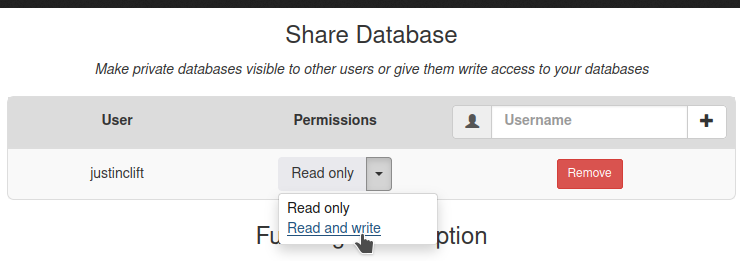We have been hard at work making improvements to DBHub.io. We’ve not only updated database sharing, but also allowed database updates via the API. Read more about that in this blog post.

DBHub.io has allowed database sharing (databases you upload can be either private or public, with private databases shareable to specific users) since Aug 2020, but knowing what databases you’ve shared and to who has been a bit cumbersome. You’d have to remember what databases you’ve shared to then go into the settings to see who has access.

Now when you log in, there are two extra sections showing the databases that have been shared with you, and the databases you’ve shared with others. It also shows the access level they have - whether they can only view (read only) or can overwrite it and make changes (read and write).
This GUI and process is continually improving and is in strong development, so will only get better, but this is a substantially better approach to make this easier and more practical to use. ‘You said, we did’ !
Quick reminder on sharing

As a quick reminder, to share a database, go to DBHub.io and click the database you want to share. Click the ‘Settings’ link to view the settings for this database.

In the ‘Share Database’ section, enter the username of the person you want to share with and click the [+] button.

By default, the person will only have read-only access. If you want to grant read and write access, click the dropdown and select ‘Read and write’. Click the blue ‘Save’ button to save your changes. You’ll return back to the database screen.